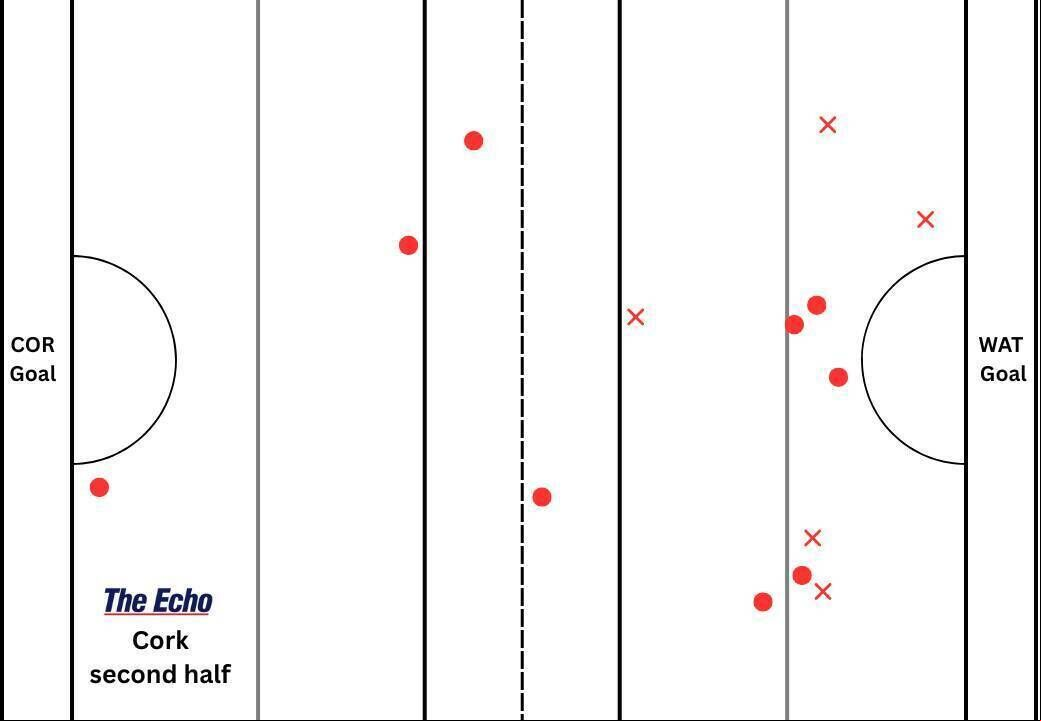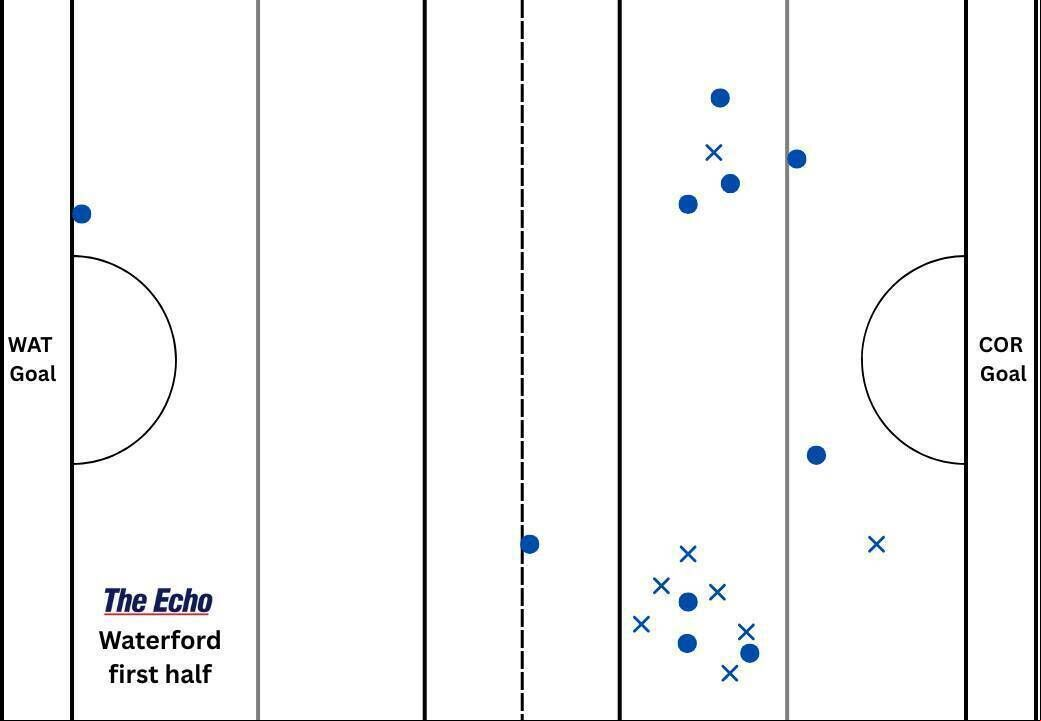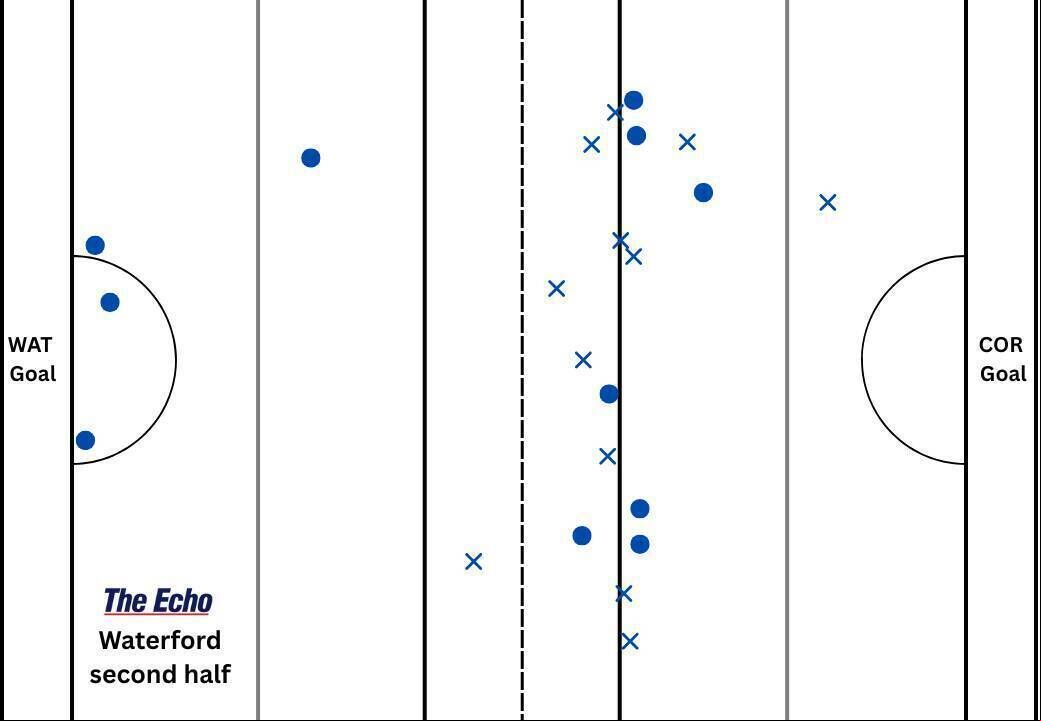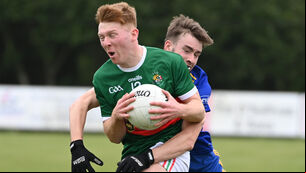Cork v Waterford puckout analysis: Rebels got the wind right

Darragh Fitzgibbon of Cork has his helmet grabbed by Conor Prunty of Waterford during the Munster GAA Hurling Senior Championship Round 5 match between Cork and Waterford at SuperValu Páirc Ui Chaoimh in Cork. Picture: Brendan Moran/Sportsfile
All in all, Cork’s victory over Waterford was a convincing one. The Rebels were never seriously under pressure – and much of that was down to how well they handled the first half.
Conditions were extremely tricky. A strong breeze made shooting difficult early on, which contributed to Cork’s sluggish start, falling 0-5 to 0-1 behind. But they adapted quickly and effectively.


A huge part of that adaptation came from their puckout strategy. With such a stiff breeze, it was a no-brainer for Patrick Collins to go short for the majority of the first-half restarts. Eight of his 16 puckouts went to a player in the full-back line on the 20-metre line, helping Cork build from deep.
Only five puckouts in the first half went beyond halfway – and Cork lost two of those. When they did go long, Collins ensured the ball was on. Turnovers were always dangerous in those conditions, so control was key. The fact that Cork went in at the break a point ahead spoke volumes about how well they managed the wind.
Just 20 seconds after the restart, Brian Hayes had the ball in the net—a clear signal of Cork’s intent. Their puckout approach reflected that. In the second half, Collins went short just three times from 14 restarts.
The longer approach paid dividends. Even when Cork didn’t win the initial ball, they were aggressive in the counter-press and often turned the Déise over quickly. Only five of their second-half restarts weren’t retained, and Cork managed to win back several of those loose ones soon after.
With Brian Hayes and Alan Connolly inside, the goal threat was ever-present. Waterford were rightly wary of it, and while they did manage the danger fairly well, that caution impacted their own rhythm. At times, they appeared too focused on containing Cork rather than imposing themselves.
Even when Shane Kingston and Conor Lehane entered the fray late on , the two showed precisely why they’re still options for Pat Ryan.
The Cork performance wasn’t spectacular – but it was exactly what Ryan would have wanted. They quietly completed executed the job and now they’ll have a lot to be confident about heading into Munster final.


Waterford’s restarts, by contrast, were far messier. In the first half, their primary target was the right wing, but they won just three of their 10 puckouts there. They had better success going left – winning four of five - but overall, they didn’t capitalize on the wind advantage.
Not once did Billy Nolan puck it to someone in his own half in the opening period. While on the surface that might make sense with such a strong breeze, when you look at how Cork fared in the Gaelic Grounds the weekend previous, going short only way Cork could stop the bleeding.
Though Waterford led for much of the first half, they didn’t do enough to build a real cushion.
That proved costly in the second period. They stuck with the long game out wide and won just 11 of 23 puckouts overall. Four of those were short – all successful – but on their 19 long restarts, they claimed just seven.
Against the wind, that’s a recipe for disaster.
Cork deserve credit here – especially Mark Coleman and Cormac O’Brien. On his debut start, the latter was excellent on Waterford’s puckouts, and for Coleman, a player who’s constantly criticised for a lack of defensive effort, his positioning was much improved from the defeat to Limerick. He did a stellar job in the air.
Puckouts weren’t the winning and losing of this by any means, but Cork got it right. That’s something they’ll take great encouragement from.












 App?
App?







